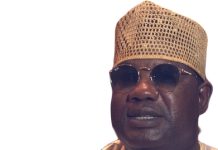About 729,800 Gambians faced food insecurity last year, The Gambia National Food Security Survey Report says.
The survey was conducted by the World Food Programme (WFP), in collaboration with the Ministry of Agriculture and the Gambia Bureau of Statistics of the Gambia.
According to the survey report, out of 729,800 people, 42,800 people faced severe food insecurity.
Whilst 24 percent of households face inadequate food consumption and 4 percent face poor food consumption.
‘Food insecurity is higher in rural areas, with over half of the population (52 percent) categorised as food insecure, in contrast to urban areas where the rate is 21 percent.’
The survey covers eight local government areas in the Gambia and found the highest prevalence of food insecure households in the rural areas.
Among the LGAs, Basse has 41 percent rate of food insecurity, Janjanbureh has 44 percent rate and Kuntaur has 61 percent rate respectively.
Kanifing (18 percent), Brikama (25 percent), and Banjul (27 percent) have lower prevalence of food insecurity.
‘The survey results indicate a slight deterioration in the food security situation since 2022, increasing from 27 percent to 29 percent.
The deterioration of food security since 2022 occurred in Banjul (+4 percent), Brikama (+6 percent), and Kanifing (+11 percent).
Given the high number of EAs in the Kuntaur LGA, the increase in food insecurity in this area has significantly contributed to the national average,’ the report says.
The survey report stated that the primary driver of food insecurity has been the increased cost of living, evident in the higher proportion of food expenses in the monthly budget.
The survey finds that 38 percent of households spend more than 75 percent of their budget on food.
‘This has led to an increased economic vulnerability that aligns with the economic challenges facing the country.
Only one out of every four households (26 percent) spend less than half of their monthly expenditures on food.
Gambian households are increasingly facing economic vulnerability due to the economic challenges the country is facing.
According to the survey, urban households are more prone to high-food prices, market fluctuation and employment loss, and climate-related events.
‘Without increased interventions to strengthen the resilience of rural households, these climate shocks have the potential to trigger a rural exodus, at the detriment of the urban infrastructures, education and health systems and the overall likeability of the cities,’ the survey states.
The loss of employment, high food prices, climate-related shocks, and health-related issues are the cause of food insecurity.
The factors with the exception of loss of employment are higher in the rural areas than the urban areas.
Meanwhile, the survey recommends the Gambia Government enhance price regulation and expand their social safety net programme in LGAs mostly affected for a short solution.
For the long term, it recommends the government to support rural areas to resilience toward climate related shocks; support sustainable agricultural practices and local ecosystems and also enhance market access by improving the flow of food and other essential products from rural areas to broader markets.




















